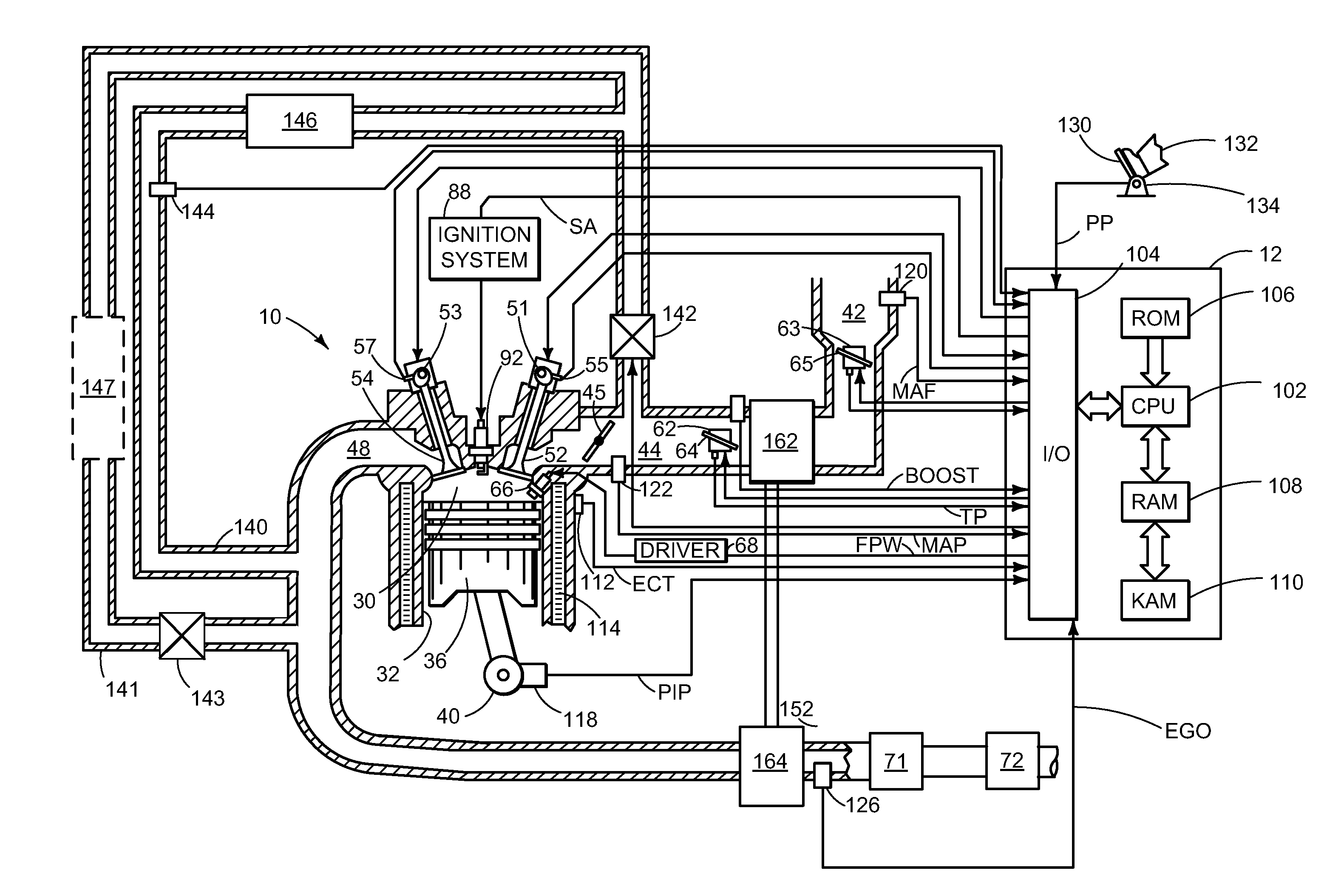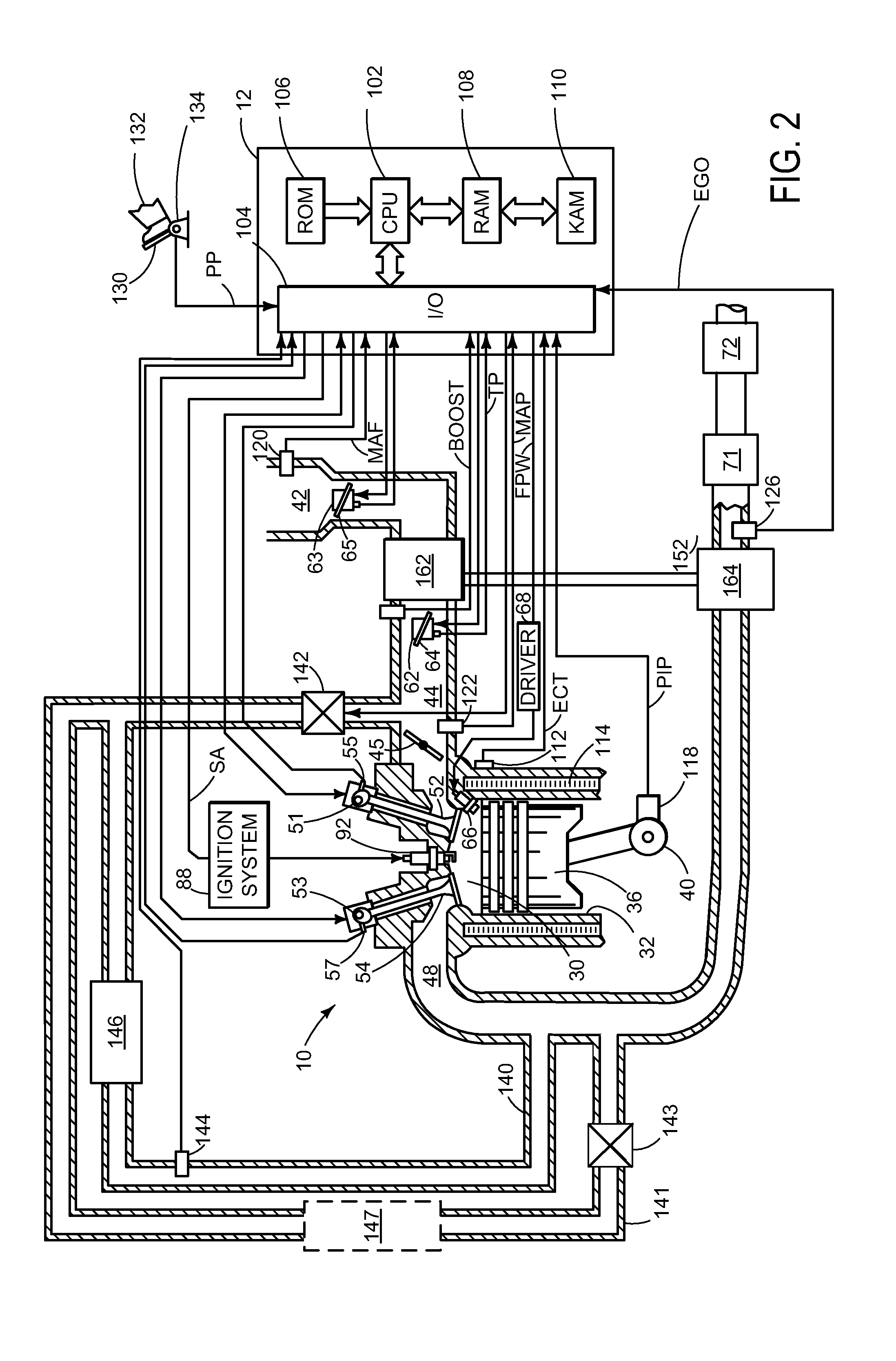Exhaust system and methods for efficient exhaust heat recovery
a technology of exhaust heat recovery and exhaust system, which is applied in the direction of mechanical equipment, machines/engines, electric control, etc., can solve the problems of limited exhaust heat recovery amount available from the system, large heat recovery portion of exhaust gas flow, and difficulty in packaging separate heat exchangers in vehicles, etc., to achieve efficient and expeditious heat recovery, increase heat recovery, and reduce size, weight and cost
- Summary
- Abstract
- Description
- Claims
- Application Information
AI Technical Summary
Benefits of technology
Problems solved by technology
Method used
Image
Examples
Embodiment Construction
[0015]Upon starting a car in cold conditions, passengers may desire expedient cabin warming for a comfortable driving experience. Because cabin air is heated by engine coolant routed to the heater core, heat generated by an engine may be the primary source of heat for the passenger compartment in some instances. Thus, to reach a threshold cabin temperature above which it is possible to turn off the engine during vehicle operation, for example, to reduce fuel consumption in a hybrid vehicle, the engine may be operated until sufficient heat has been transferred to the engine coolant. For this reason, FIG. 2 shows an example hybrid vehicle system. Then, FIGS. 3-6 illustrate exemplary exhaust systems with an EGR cooler coupled to an exhaust gas heat recovery line configured and operated according to the present disclosure. FIGS. 7 and 8 further show example methods for changing the operating mode of the vehicle by adjusting an exhaust flow pathway based on valve states whereas FIG. 9 il...
PUM
 Login to View More
Login to View More Abstract
Description
Claims
Application Information
 Login to View More
Login to View More - R&D
- Intellectual Property
- Life Sciences
- Materials
- Tech Scout
- Unparalleled Data Quality
- Higher Quality Content
- 60% Fewer Hallucinations
Browse by: Latest US Patents, China's latest patents, Technical Efficacy Thesaurus, Application Domain, Technology Topic, Popular Technical Reports.
© 2025 PatSnap. All rights reserved.Legal|Privacy policy|Modern Slavery Act Transparency Statement|Sitemap|About US| Contact US: help@patsnap.com



